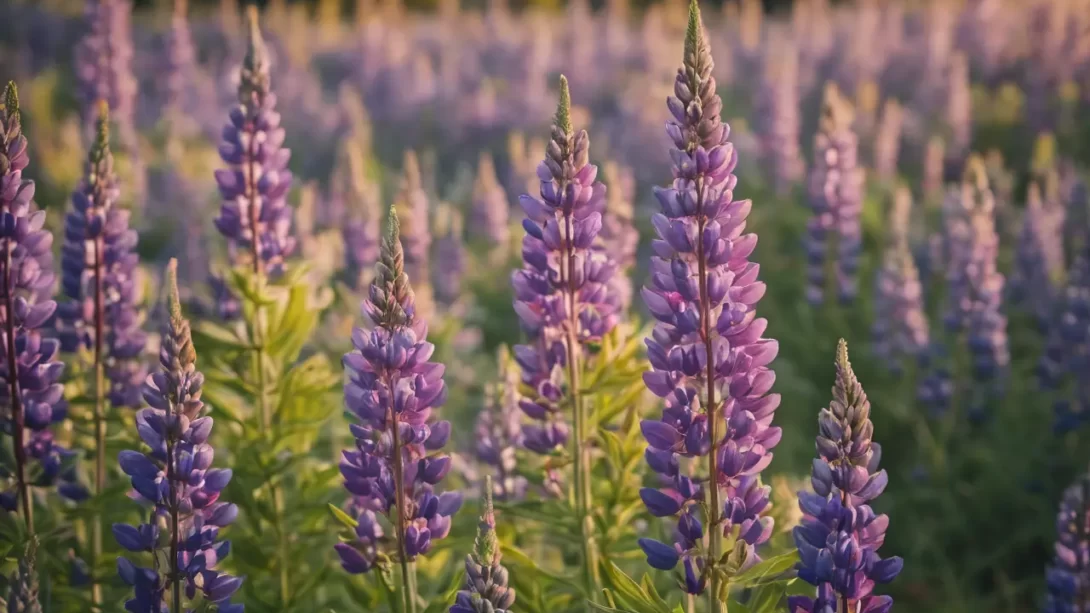Lupines, renowned for their striking and colorful flower spikes, are a favorite among gardeners and flower enthusiasts. These beautiful plants not only add a vibrant touch to gardens but also intrigue with their unique blooming patterns. A common question among lupine admirers is regarding the duration of their bloom. This article explores the blooming period of lupines and the factors that influence it.
Overview of Lupines
Lupines are part of the legume family and are known for their distinctive, tall spikes of flowers which can come in a variety of colors including blue, purple, pink, and white. They vary in size, with some species growing up to four feet tall. Lupines are found in a range of environments, from coastal to mountainous regions, and are particularly prominent in North America and the Mediterranean. The diversity in lupine species contributes to the variation in their flowering habits and bloom durations.
Lupine Blooming Season
The blooming season for lupines typically begins in late spring and can extend into early summer. This general timeline, however, can shift depending on geographic location and local climate conditions. In cooler climates, lupines may start blooming later in the season, whereas in milder regions, their flowers can appear earlier. The specific species of lupine also plays a role in determining the start of the blooming period.
Duration of Blooming
Typically, lupines are in bloom for about 3 to 4 weeks. This duration can be influenced by the specific lupine variety and the prevailing weather conditions during the blooming period. Some hybrid varieties have been bred for longer blooming, whereas wild lupines may have a shorter bloom time. Additionally, consistent and favorable weather conditions can help extend the blooming period, while extreme conditions such as excessive heat or cold can shorten it.
Factors Influencing Lupine Bloom Length
Several environmental and care factors can impact how long lupines bloom. Soil quality is crucial; lupines thrive in slightly acidic to neutral soil. Proper water management is also important; lupines prefer well-drained soil and may suffer in overly wet conditions. Sunlight is another critical factor; lupines generally need full sun to bloom at their best. However, in areas with intense sunlight, some afternoon shade can prevent the flowers from fading quickly. Temperature also plays a role; mild temperatures are ideal for longer blooms, as extreme heat can accelerate the end of the blooming period.
Maximizing the Blooming Period
Gardeners can take specific steps to extend the blooming period of their lupines. Regular watering, without over-saturating the soil, helps maintain healthy plants. Applying a balanced, slow-release fertilizer can provide necessary nutrients without overwhelming the plants. Deadheading, or removing spent flowers, can encourage the plant to produce more blooms. Additionally, protecting lupines from pests and diseases through proper garden hygiene and the use of appropriate treatments can keep the plants healthy and prolong their flowering.
After Bloom: Care and Maintenance
Once lupines have finished their spectacular display of blooms, proper care and maintenance are crucial to prepare them for the next season. After the flowers fade, it’s beneficial to cut back the flower stalks to encourage the plant to focus its energy on root and foliage development rather than seed production. This practice can also help in promoting a second, albeit smaller, bloom in late summer or early fall.
Allowing a few flowers to go to seed can be a good strategy for those who wish to encourage lupine propagation, as they can self-seed under optimal conditions. However, be mindful of their potential to spread in your garden space. As fall approaches, reducing the amount of water can help the plants begin their natural dormancy cycle. In preparation for winter, a layer of mulch can be added around the base of the plants to protect the roots from freezing temperatures.
Conclusion
Lupines, with their stunning floral spikes, are a highlight in any garden during their bloom. Typically flowering for 3 to 4 weeks, their blooming period can be influenced by factors such as soil quality, water availability, sunlight, and temperature. By understanding these factors and implementing proper care techniques, gardeners can maximize the bloom time of their lupines. Post-bloom care is equally important to ensure the health and vigor of the plants for the following season. With appropriate maintenance, lupines can continue to captivate and add beauty to gardens year after year, serving as a testament to the rewards of thoughtful gardening.



